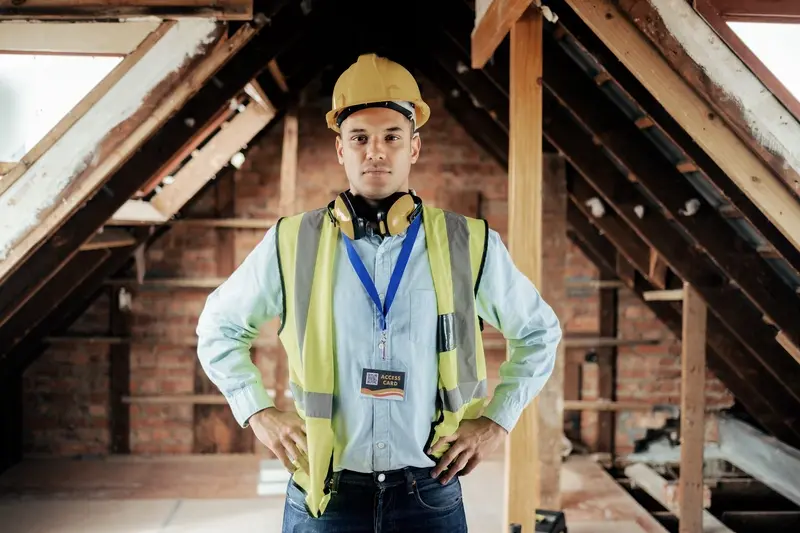How To Develop A Social Media Mobile App
If you're reading this guide, chances are you've had that lightbulb moment - an idea for a social media app that could change how people connect online. Perhaps you've spotted a gap in the market, or maybe you're looking to build a community around a specific interest. Whatever your motivation, developing a social media app is an exciting yet complex journey.
Over the past eight years, we've witnessed the social media landscape evolve dramatically. From the rise of TikTok to the transformation of Facebook into Meta, one thing remains constant: people's fundamental desire to connect, share, and engage with others online.
Building a social media app isn't just about creating features - it's about fostering genuine human connections while ensuring everyone feels safe and respected in your digital space
Why Safety Matters from Day One
Before we dive into the technical aspects, let's address the elephant in the room: responsibility. Creating a social platform means becoming a guardian of your users' wellbeing. From day one, you'll need to think about content moderation, user protection, and creating a safe environment where your community can thrive.
Throughout this guide, we'll walk you through every crucial step of social media app development, from initial concept to launch and beyond. We'll share practical insights from our experience working with startups and established brands alike, helping you navigate common pitfalls and make informed decisions. Whether you're envisioning the next Instagram or a niche community platform, we'll help you transform your vision into reality whilst prioritising user safety and engagement.
Understanding Social Media App Basics
When you think about creating a social media app, it's a bit like building a digital community centre. Just as physical spaces need careful planning to ensure everyone feels welcome and safe, your social media app requires thoughtful consideration of its fundamental elements.
Core Components Every Social App Needs
At Glance, we've learned that successful social media apps share several essential building blocks. Think of these as the foundation of your digital house - without them, things might get a bit wobbly!
- User Authentication: Secure login and registration systems
- User Profiles: Customisable spaces for personal expression
- Content Sharing Capabilities: Text, images, videos, or other media
- Interaction Features: Likes, comments, and sharing mechanisms
- Content Moderation Tools: To maintain a safe, welcoming environment
- Privacy Controls: Giving users control over their data
Safety and Community Guidelines
Remember how your favourite local café has rules to keep everyone comfortable? Your social app needs similar guidelines. We've seen many brilliant apps struggle because they overlooked safety measures early on. It's crucial to implement content moderation systems, reporting mechanisms, and clear community guidelines from day one.
Think of your app as a dinner party - you want everyone to have fun, but you also need to ensure nobody's behaviour ruins the experience for others. This means considering how you'll handle inappropriate content, protect vulnerable users, and maintain a positive atmosphere while scaling your user base.
Planning Your App's Core Features
When you're dreaming up your social media app, it's a bit like planning a party - you need to decide what will make people want to come and stay. From our experience working with countless app creators, we've learned that successful social apps strike a perfect balance between must-have features and unique elements that make them special.
Essential Building Blocks
Every social media app needs certain fundamental features. Think of them as the bread and butter of your platform: user profiles, a news feed, direct messaging, and content sharing capabilities. Just like how Facebook started with simple profile pages before becoming the giant it is today, you'll want to begin with these basics but execute them brilliantly.
Safety and Trust Features
Here's something many developers overlook initially: safety features aren't optional extras - they're absolute essentials. Your app needs robust reporting systems, content filtering, and user blocking capabilities from day one. We've seen how apps like TikTok evolved their safety features over time, but today's users expect these protections from the start. Consider implementing automated content screening and a clear process for handling user reports.
Start with a minimal viable product (MVP) that includes core features and basic safety measures, then build additional features based on user feedback. It's much easier to add features than to remove them once users become attached.
Remember, while it's tempting to pack your app with features, keeping things simple initially often leads to better user adoption. Focus on what makes your app unique while ensuring the basics work flawlessly. Whether you're building the next Instagram or a niche community platform, getting these foundations right will set you up for success.
Safety First: Content Moderation and User Protection
When building a social media app, ensuring user safety isn't just a box to tick—it's a fundamental responsibility. After helping countless clients develop secure social platforms, we've learned that users will only engage meaningfully when they feel protected.
Essential Safety Features
Think of content moderation like a nightclub bouncer for your app—it needs to be both strict and smart. Modern social apps require multiple layers of protection, much like an onion's layers, each working together to create a secure environment.
- Automated content filtering using AI to detect inappropriate content
- User reporting systems with clear escalation procedures
- Account verification options to prevent impersonation
- Privacy controls that are easy to understand and adjust
- Block and mute functionality for user empowerment
Building Trust Through Protection
Remember when Instagram introduced content warnings for sensitive posts? That's the kind of thoughtful protection users appreciate. Your app should incorporate similar trust-building elements, but tailored to your specific audience and purpose.
We've found that the most successful social apps combine both automated and human moderation. While AI can handle the heavy lifting of filtering obvious violations, having a human touch for nuanced decisions makes users feel truly cared for. It's rather like having both CCTV cameras and friendly security staff in a shopping centre—they serve different but complementary purposes.
Remember, safety features shouldn't feel like barriers to engagement. The best protection systems work quietly in the background, letting users focus on what matters most: connecting and sharing with confidence.
Designing the User Interface and Experience
Creating a social media app that users love starts with thoughtful interface design and a seamless user experience. Think about your favourite social apps - whether it's Instagram or WhatsApp - they all share one thing in common: they're incredibly intuitive to use.
The Foundations of Great Social App Design
When designing your social media app's interface, remember that simplicity is your best friend. Users should be able to navigate through your app as naturally as they walk through their own home. We've found that the most successful social apps maintain a clean, uncluttered design with clear visual hierarchies and consistent styling throughout.
The best social apps aren't just beautiful - they elicit an emotional reaction in every interaction.
Safety Through Design
Your app's design isn't just about aesthetics - it's about creating a safe, welcoming environment for all users. Include easily accessible reporting buttons, clear privacy settings, and visible content warnings where necessary. Consider implementing a colour-coded system for different privacy levels or verification badges for trusted users, similar to how Twitter uses its blue tick system.
Remember to design with accessibility in mind. This means incorporating features like adequate contrast ratios, customisable text sizes, and alternative text for images. We've learned that thoughtful accessibility features don't just help users with disabilities - they make the app better for everyone.
Lastly, don't forget about feedback mechanisms. Users should always know what's happening in your app, whether that's a gentle animation when they like a post or a friendly notification when someone follows them. These micro-interactions might seem small, but they're what make your app feel alive and responsive.
Building User Profiles and Connections
Creating meaningful connections is at the heart of any social media app - much like how we build relationships in real life, but with digital tools at our disposal. At Glance, we've learned that user profiles serve as digital handshakes, making that crucial first impression count.
Essential Profile Elements
Think of user profiles as digital identity cards that help people showcase their authentic selves. We recommend including these fundamental features whilst maintaining user privacy and safety:
- Customisable username and display name
- Profile photo with automated content screening
- Brief bio or "About Me" section
- Privacy settings controls
- Two-factor authentication options
- Content sharing preferences
Building Trust and Safety
Remember MySpace's early days when anyone could message anyone? We've come a long way since then! Modern social apps need robust safety features. We recommend implementing verification badges, reporting mechanisms, and clear community guidelines. It's like creating a neighbourhood watch programme for your digital community.
Connection features should be intuitive yet secure. Consider implementing "mutual friends" displays, similar to LinkedIn's approach, helping users make informed decisions about new connections. Adding progressive disclosure - where users gradually share more information as trust builds - can help create a safer environment.
The key is striking the right balance between fostering genuine connections and maintaining user safety. Just as you wouldn't share your house keys with a stranger, your app should help users manage their digital boundaries effectively whilst building meaningful relationships.
Creating Engaging Social Features
When it comes to social media apps, engagement is the secret sauce that keeps users coming back for more. Having worked with numerous social platforms over the years, we've learned that successful apps strike the perfect balance between functionality and fun.
Essential Engagement Features
Think about what makes you spend hours scrolling through your favourite social apps. It's typically the little dopamine hits you get from likes, comments, and shares. These core interaction features need to feel natural and rewarding. Remember Instagram's double-tap to like? That's the kind of intuitive interaction we're talking about.
- Real-time messaging with rich media support
- Interactive story features with filters and stickers
- Live streaming capabilities
- Comment threading and reactions
- Content sharing and reposting options
Safety and Community Guidelines
While creating engaging features is crucial, it's equally important to implement robust safety measures. We recommend building in reporting mechanisms, blocking capabilities, and content filtering systems from day one. Think of it like having a bouncer at a club – you want to keep the party fun while ensuring everyone feels safe.
Remember to incorporate features that encourage positive interactions, such as community challenges, group activities, or collaborative content creation. These features not only boost engagement but also help create a more supportive community atmosphere.
Consider implementing a 'kindness reminder' feature that prompts users to reconsider potentially harmful comments before posting – similar to Instagram's approach. This simple addition can significantly improve the quality of user interactions.
Technical Development and Platform Choice
When it comes to building your social media app, choosing the right technical foundation is like picking the perfect ingredients for a cake - it can make or break your final product. We've helped countless entrepreneurs navigate these waters, and we understand it can feel overwhelming.
Choosing Your Development Path
Your first big decision is whether to build for iOS, Android, or both platforms simultaneously. While building for both reaches more users, it requires more resources. Many successful apps, like Instagram in its early days, started with just iOS before expanding. Cross-platform frameworks like React Native or Flutter can help you develop for both platforms more efficiently, though they might limit some advanced features.
Safety and Infrastructure Considerations
When building a social platform, your technical architecture must prioritise user safety. You'll need robust systems for content moderation, user verification, and data protection. We recommend implementing automated content filtering using AI tools, alongside manual moderation capabilities. Your backend infrastructure should include:
- Real-time content scanning APIs to detect inappropriate material - End-to-end encryption for private messages - Secure user authentication systems - Scalable cloud storage with regular backups - Content delivery networks (CDNs) for faster media loading
Remember, your technical choices should align with your app's goals. For instance, if you're building a photo-sharing app, you'll need powerful image processing capabilities and efficient storage solutions. Think of it like building a house - you need a solid foundation that can support all the amazing features you plan to add later.
The most successful apps we've worked with started with a focused, well-architected minimum viable product (MVP) and expanded based on user feedback. This approach helps validate your concept while managing development costs effectively.
Testing and Quality Assurance
When you're building a social media app, testing isn't just a checkbox to tick off—it's your safety net. We've seen countless promising apps stumble at this crucial stage, so let's ensure yours isn't one of them.
Quality assurance isn't about finding bugs; it's about ensuring your users heard in your digital community
Core Testing Areas
Think of testing your social media app like test-driving a car—you need to check everything from the engine to the cupholders. Start with functional testing to ensure basic features work smoothly. This means verifying that posts appear correctly, notifications arrive promptly, and user interactions feel natural. Remember how frustrating it is when a 'like' button doesn't respond? That's exactly what we're preventing here.
Safety and Security Testing
In today's digital landscape, safety testing is non-negotiable. Your content moderation systems need rigorous testing across different scenarios. We typically create hundreds of test cases simulating various forms of inappropriate content, harassment situations, and potential security breaches. It's like having a virtual bouncer who needs training for every possible situation.
Performance testing is equally crucial. Your app needs to handle thousands of simultaneous users sharing holiday photos or responding to trending topics. We've learned (sometimes the hard way!) that load testing during peak times can reveal issues that wouldn't appear during normal usage. After all, there's nothing worse than your app crashing just as your user is about to share their engagement announcement!
Remember, thorough testing isn't just about preventing crashes—it's about creating a safe, reliable space where your users can connect with confidence.
Launching and Growing Your Social App
After months of development, you're finally ready to share your social media app with the world. It's an exciting moment, but also one that requires careful planning and attention to detail. Let's explore how to launch your app successfully whilst maintaining user safety and steady growth.
Pre-Launch Essentials
Remember when Instagram first launched? It started small, targeting photography enthusiasts before expanding. Similarly, you'll want to identify your core user base and create a targeted launch strategy. Start with a soft launch in a specific region or community to gather real-world feedback and iron out any issues.
Before going live, ensure your content moderation systems are robust and scalable. We've seen too many social platforms struggle with harmful content after rapid growth - it's much easier to establish strong safety protocols from day one.
Growth Strategies That Work
Growing your social app requires a delicate balance between user acquisition and community safety. Here's what we've found works best:
- Implement an invite-only system initially to create exclusivity and control growth
- Set up automated content filtering alongside human moderation teams
- Create a clear reporting system for inappropriate content
- Establish community guidelines that evolve with your user base
- Focus on user retention through engaging features and regular updates
- Monitor key metrics like daily active users and engagement rates
Remember, sustainable growth is better than viral growth that overwhelms your infrastructure. Think of it like hosting a party - you want enough people to create atmosphere, but not so many that things get out of hand. Keep your focus on building a safe, engaging community, and growth will follow naturally.
Conclusion
Building a social media app is quite the journey, isn't it? Rather like planning a grand house party - you need the right venue (platform), entertainment (features), and safety measures (content moderation) to make sure everyone has a brilliant time whilst staying protected.
Throughout this guide, we've explored the essential elements that make social apps tick, from the foundational building blocks to the finishing touches that delight users. Remember, success isn't just about fancy features or cutting-edge technology - it's about creating a safe, welcoming space where people can connect meaningfully.
Content moderation and user safety should remain at the forefront of your priorities. Think of it as being a responsible host - you want your guests (users) to feel secure and respected while they're engaging with your platform. Whether you're building the next Instagram or a niche community app, implementing robust safety measures from day one will help foster trust and long-term engagement.
As you move forward with your social app development journey, keep in mind that Rome wasn't built in a day. Start with a solid foundation, prioritise user safety, and gradually build upon your success. Listen to your users, adapt to their needs, and always stay true to your app's core purpose.
Whether you're just starting or already knee-deep in development, remember that creating a social app is an ongoing process of learning, adapting, and growing. Keep user safety at the heart of your decisions, stay passionate about your vision, and don't be afraid to evolve as you learn more about your community's needs.
Share this
Subscribe To Our Learning Centre
You May Also Like
These Related Guides

How Do I Develop An App?

Can I Migrate My Existing App To Serverless Architecture?



